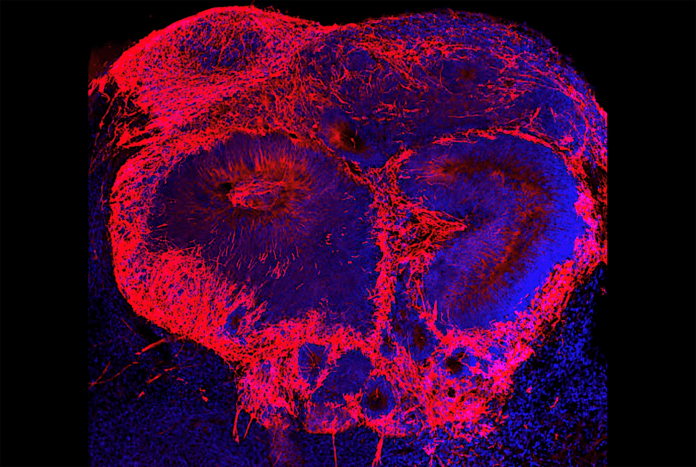A new study fills an important gap in scientists’ understanding of Schizophrenia. The study by Weill Cornell Medicine investigators suggests that multiple changes in brain cells during the first month of embryonic development may contribute to Schizophrenia later in life.
Scientists used 3-dimensional “mini-brains” or organoids by using stem cells collected from patients with Schizophrenia and people without the disease. They then compared the development of both sets of organoids. They found that a reduced expression of two genes in the cells stymies early development and causes a shortage of brain cells in organoids grown from patient stem cells.
Senior author Dr. Dilek Colak, assistant professor of neuroscience at the Feil Family Brain and Mind Institute and the Center for Neurogenetics at Weill Cornell Medicine, said, “Symptoms of schizophrenia typically develop in adulthood, but postmortem studies of the brains of people with the disease found enlarged cavities called ventricles and differences in the cortical layers that likely occurred early in life.”
“There were hints schizophrenia started during early development, but we didn’t have proof.”
Scientists are using mini-brains to find out the role of individual cell types. This will help them better understand how genetic factors may interact with the environment to cause Schizophrenia.
They are focusing on the role of endothelial cells, cells that typically line the blood vessels and release important immune molecules called cytokines. The mini-brains grown from patients with Schizophrenia had an excess of early endothelial-related cells, which could lead to an excessive immune response to infection.
Dr. Colak said, “This may explain the link between maternal infections during pregnancy and schizophrenia seen in mouse studies.”
“In addition to helping scientists better understand Schizophrenia. These mini-brains grown from patient’s stem cells may be a useful tool for studying other brain diseases.”
“The technique could be used to study the early life pathology of late-onset neuropsychiatric or neurodegenerative diseases like Alzheimer’s disease or Huntington disease.”
Journal Reference
- Michael Notaras et al., Schizophrenia is defined by cell-specific neuropathology and multiple neurodevelopmental mechanisms in patient-derived cerebral organoids, Molecular Psychiatry (2021). DOI: 10.1038/s41380-021-01316-6
